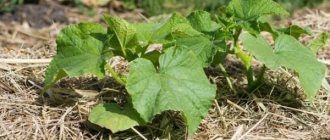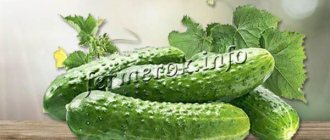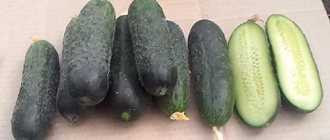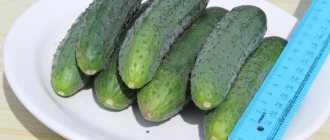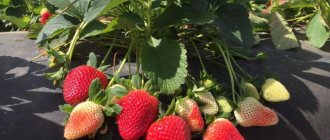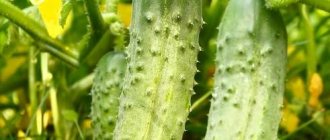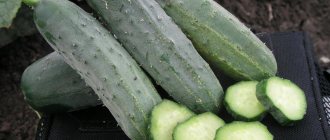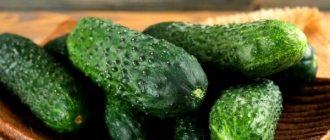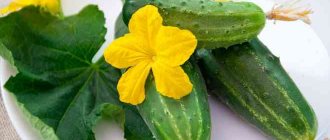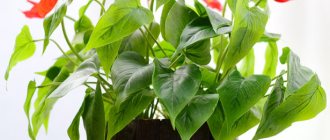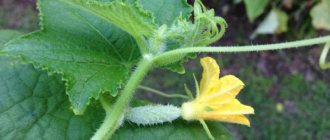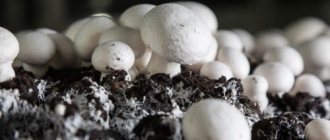Description of the hybrid
Hybrid Cedric f1 was bred by Dutch breeders of the Enza Zaden company. The culture was included in the State Register of Russia in 2015. Cucumbers are recommended for cultivation throughout the country, in greenhouses and greenhouses in spring and summer (in autumn and winter - in heated greenhouses).
Peculiarities
Indeterminate bushes require shaping and tying to a trellis. The plant is medium-branched, with a female type of flowering and a powerful rhizome. 2–4 ovaries are formed in one node.
The culture is highly productive, therefore it needs constant feeding with mineral complexes. Fruits set even in unfavorable conditions (during fluctuations in average daily temperature, lack of sunlight).
The photo shows Cedric the cucumber.
The table shows the main characteristics of the hybrid:
| Indicators | Characteristic |
| Ripening period | 40–45 days |
| Pollination type | Parthenocarpic |
| Weight | 100–105 g |
| Length | 12–14 cm |
| Form | Cylindrical |
| Coloring | Green with short light stripes |
| Leaves | Medium size, green |
| Pulp | Dense crispy |
| Taste | Sweetish, without bitterness |
| Skin | Dense, with small tubercles and white spines |
| Purpose | For fresh consumption and canning |
| Productivity | 15-16 kg/m² |
| Sustainability | To cladosporiosis, powdery mildew, cucumber mosaic virus |
| Transportability | High |
Composition and properties
Nutritional value of cucumbers (per 100 g):
- calorie content - 14 kcal;
- proteins - 0.8 g;
- fats - 0.1 g;
- carbohydrates - 2.5 g;
- water - 95 g;
- fiber - 1 g.
Table of vitamin and mineral composition:
| Name | Content | Norm |
| Vitamin A | 10 mcg | 900 mcg |
| Beta carotene | 0.06 mg | 5 mg |
| Vitamin B1 | 0.03 mg | 1.5 mg |
| Vitamin B2 | 0.04 mg | 1.8 mg |
| Vitamin B4 | 6 mg | 500 mg |
| Vitamin B5 | 0.27 mg | 5 mg |
| Vitamin B6 | 0.04 mg | 2 mg |
| Vitamin B9 | 4 mcg | 400 mcg |
| Vitamin C | 10 mg | 90 mg |
| Vitamin E | 0.1 mg | 15 mg |
| Vitamin H | 0.9 mcg | 50 mcg |
| Vitamin K | 16.4 mcg | 120 mcg |
| Vitamin PP | 0.3 mg | 20 mg |
| Potassium | 141 mg | 2500 mg |
| Calcium | 23 mg | 1000 mg |
| Silicon | 53 mg | 30 mg |
| Magnesium | 14 mg | 400 mg |
| Sodium | 8 mg | 1300 mg |
| Sulfur | 6.5 mg | 1000 mg |
| Phosphorus | 42 mg | 800 mg |
| Chlorine | 25 mg | 2300 mg |
| Iron | 0.6 mg | 18 mg |
| Iodine | 3 mcg | 150 mcg |
| Cobalt | 1 mcg | 10 mcg |
| Manganese | 0.18 mg | 2 mg |
| Copper | 100 mcg | 1000 mcg |
| Molybdenum | 1 mcg | 70 mcg |
| Selenium | 0.3 mcg | 55 mcg |
| Fluorine | 17 mcg | 4000 mcg |
| Chromium | 6 mcg | 50 mcg |
| Zinc | 0.215 mg | 12 mg |
Benefits of fruits for the body:
- normalization of water and electrolyte balance;
- relief from heartburn;
- replenishing the deficiency of minerals and vitamins;
- improvement of digestive function;
- normalization of the thyroid gland;
- removing excess fluid from tissues;
- whitening freckles when applied externally;
- lowering cholesterol levels.
Cucumber “Cedric f1”: new from
The very early parthenocarpic cucumber “Cedric f1” is ideal for cultivation in the first and second rotations, as well as for sowing in heated greenhouses.
A balanced open-type vegetable crop with a very developed root system quickly gained popularity among Russian gardeners. The description and characteristics of the new hybrid form are of interest not only to gardeners engaged in home garden cultivation of this crop, but also to vegetable growers of small farms cultivating cucumbers year-round.
Agricultural technology
The crop is grown by seedlings and by direct sowing into the ground. Caring for plantings involves frequent loosening, weeding, sufficient watering, and the application of organic and mineral fertilizers. The hybrid is resistant to major crop diseases, which greatly facilitates its cultivation.
Planting by seed
Cucumbers are grown on fertile, loamy and loose soils. Crop rotation is difficult to maintain indoors. More often, plants are simply swapped from year to year. Under such conditions, the soil is quickly depleted and pathogenic microflora accumulates. Farmers replace the top layer of soil with a new one, but this procedure requires labor and money.
Simplifies the task of sowing green manure. Legumes, white mustard and oilseed radish restore soil fertility. Oats fill the soil with nitrogen, potassium and phosphorus and inhibit the development of nematodes.
In the fall, the soil in the greenhouse is dug up and green manure is sown. The green mass is growing rapidly. Within a month, the plants are mowed down and buried in the ground. To accelerate decay, water with a solution of the Baikal-EM preparation.
Seeds do not need disinfection, since all Dutch-made planting material undergoes pre-treatment. Sowing is carried out at the end of May or at the beginning of June. The air temperature should warm up to at least +20 °C, the soil temperature - to +16 °C.
A bayonet shovel is used to dig up the area. The beds are formed 70 cm wide and 20 cm deep. Peat, sawdust and chicken droppings (10 l/1 m²) are added for feeding. Use a rake to level the surface and lightly press it down. A 2-3 cm depression is formed in the middle, into which a hot solution of potassium permanganate is poured for disinfection.
Seeds are planted to a depth of 2-3 cm, at a distance of 25 cm from each other, lightly pressed into the soil with the palm of your hand. Moist soil is poured on top and covered with agrofibre to protect against frost.
DO THIS WHEN PLANTING CUCUMBERS! WHAT TO PLACE IN THE HOLE!
Planting by seedlings
Sowing seeds for seedlings is carried out in mid-April. Use 500 ml peat containers or 10x10 cm cassettes. The container is filled with a moist soil mixture of 2 parts soil, humus and 1 part river sand.
The seeds are planted one at a time, to a depth of 1.5 cm. Polyethylene is pulled over the top and taken to a dark place. The optimal temperature for rapid germination is + 27 °C.
After the sprouts appear, the shelter is removed and the containers are placed on the windowsill on the south side of the house. During the first 5 days, the temperature is gradually reduced: during the day - to +15...+18 °C, at night - to +12...+14 °C. This prevents the seedlings from being pulled out.
The seedlings are watered with warm, clean water once a week.
After the appearance of 4 true leaves, the seedlings dive into the greenhouse. The soil is prepared in the same way as for direct sowing. Planting pattern: 20x60 cm, 3 bushes per 1 m². The roots are hilled up, lightly compacted and watered generously.
Reference! Cedric is grown in open ground in seedlings provided the soil is warmed to +16 °C. The method is suitable for southern regions.
Growing and care
Rules for caring for crops:
- The temperature in the greenhouse is maintained at least +20 °C.
- The bushes are watered at the root with warm rain or settled water, and a drip humidification system is organized, combining water with mineral fertilizers.
- Loosening and weeding are carried out regularly. Weeds are removed from the roots.
- To maintain a high level of productivity, the bushes are formed and tied to a trellis.
- During the growing season, plants are fed at least 5 times, alternating organic matter and mineral mixtures.
The table shows the feeding scheme for cucumbers:
| Stage of development | Fertilizer | Application |
| Before flowering | "Agricola-5" | 1 tbsp. l. for 10 liters of water. Treat bushes once. |
| During the flowering period | Superphosphate, urea and potassium sulfate | 1 tsp. powder per 10 liters of water. Use for watering once, apply 10 days after the first feeding. |
| During the fruiting period | "Agricola-Vegeta" | 1 tbsp. l. for 10 liters of water. Consumption per 1 m² - 5 l. |
| Cow dung, potassium sulfate | 500 ml manure, 1 tsp. potassium sulfate per 10 liters of water. Consumption per 1 m² - 5-6 l. | |
| Nitrophoska and "Barrier" | 1 tbsp. l. nitrophoska, 2 tbsp. l. liquid ready-made fertilizer per 10 liters of water. Consumption per 1 m² - 6–9 l. | |
| "Fertility", "Agricola-5" | 1 tbsp. l. ready-made fertilizers per 10 liters of water. Consumption per 1 m² - 5 l. |
Features of cultivation and possible difficulties
The hybrid is hardy and quickly adapts to growing conditions. Parthenocarpic needs staking and proper shaping of the bushes:
- The first 5-6 leaf axils are blinded (ovaries and shoots are removed).
- In cloudy, cool weather, blinding is carried out at 7-8 knots.
- The main stem is led to the trellis, removing the stepsons and leaving only the ovaries.
- When it reaches the crossbar, the stem is wrapped around it, pinched after 3–5 leaves have formed, or thrown over the bar and the crown is pinched a meter from the ground.
- The lower dry and yellow leaves are removed early in the morning.
Diseases and pests
Hybrid Cedric is immune to cladosporiosis, powdery mildew, and cucumber mosaic virus. For preventive purposes, a number of procedures are performed:
- greenhouses are fumigated with sulfur bombs in the fall;
- the ground is disinfected with copper sulfate (50 g of powder per 10 l);
- observe crop rotation, plant green manure;
- control the level of nitrogen in the soil;
- regulate indoor humidity;
- mineral fertilizers are applied in a timely manner.
The plant is susceptible to attacks by melon aphids, spider mites, whiteflies, and cucumber mosquitoes. The table contains the main signs of infection and methods of insect control:
| Pest | Signs | Treatment |
| Cucumber mosquito | Holes on cotyledon leaves, white larvae (6 mm) on the reverse side, wilting of plants. | Treatment of bushes with Aktara in the first days after planting. Sticky yellow tapes hung from the ceiling help. |
| Spider mite | Small white dots on the backs of leaves, thin cobwebs on the bushes. | Fill a bucket ½ full with dry marigold flowers and add warm water. After 48 hours, add 25 g of liquid soap. Use for treatment once a week. Apply "Bitoxibacillin" twice per season. The drug is safe for bees and humans. |
| Aphid | Drooping leaves, drops of honeydew, a large concentration of ants. | Grind 500 g of dandelion roots and green parts in a meat grinder, add 5 liters of water. After 4 hours, mix 2 tbsp. l. mustard powder. Treat bushes once every 5–7 days. |
| Whitefly | Sticky coating on stems and leaves, many white larvae in the early stage, flocks of white moths in the late stage. | 100 g of dry datura herb pour 1 liter of warm water. After 10–12 hours, strain. Treat plants once every 10 days. |
How to care for cucumbers (video)
According to gardeners, at the stage of growing seedlings, cucumbers of this variety did not differ in growth and development activity from other Dutch hybrids. Many gardeners practice direct sowing of seeds on ridges in heated greenhouses without the use of artificial lighting in the first ten days of January. The flowering period for such cultivation is fixed after 35-38 days, and the first harvest can be carried out approximately two months after sowing. With an average plant height of two meters and forming one stem, the greens grow together along the entire length of the plant.
Sources:
https://sortoved.ru/ogurec/sort-ogurca-sedrik-f1.html https://dachamechty.ru/ogurtsy/sedrik-f1.html https://dachadecor.ru/ogorod/ogurets-sedrik-f1- novinka-ot-kompanii-enza-zaden
Harvesting and application
Cucumbers are harvested every 3 days to preserve further productivity of the crop. The first fruits are harvested 40 days after the sprouts appear. The bushes bear fruit before the onset of cold weather.
The dense structure of cucumbers without voids and bitterness allows them to be used for pickling and pickling for the winter. Fruits with a sweetish crispy pulp are great for preparing seasonal salads and vegetable slices.
The harvest is stored in the cellar for about 2 weeks. During transportation, cucumbers do not lose their presentation.
Care
When planting this variety, you need to take into account the development characteristics of the bush. In accordance with the description, it has an indeterminate type and a powerful root system, so each bush needs to be provided with sufficient space for development. When planting seedlings, the prepared hole should have a diameter of about 40 cm.
Fertilizers and compost are added to it, which will ensure complete nutrition of the bush for the entire growing season. For 1 sq. m, it is permissible to plant 2-3 plants, the distance between rows should be at least 50 cm.
Garter
Cedric is a cucumber hybrid intended for cultivation in greenhouses, which affects the characteristics of its care. Cedric f1 requires staking and growing on a trellis. The best option would be a vertical garter:
- a cord (fabric strip) is attached to the frame of the greenhouse;
- lowered to each individual plant;
- tied to the stem under the third leaf or secured to the ground with a metal bracket;
- let the cucumbers trail up.
This method of growing makes it easier to care for the bushes and creates favorable conditions for growth.
To increase the fruiting of greenhouse varieties, the blinding technique is used.
How to conduct
This variety needs gartering.
It is carried out as follows:
- remove all stepsons and ovaries to the level of the 6th pair of leaves;
- plants form into one central stem, cutting off the side branches, leaving only the places where the ovary forms;
- brought to the top trellis in the greenhouse and secured;
- when shoots grow at the nodes and there are about 5 leaves on them, pinch off the top of the central stem;
- As they dry, the lower leaves are removed.
Fertilizers
The Cedric f1 variety requires regular feeding due to intensive growth and fruiting. Can be used:
- complex mineral;
- organic;
- folk recipes.
All of them will be effective if used correctly and dosage maintained.
When growing cucumbers, it is important to remember to water regularly. A sufficient amount of moisture is necessary for the full development of the plant, and its lack or excess can significantly harm the bushes.
Reviews
Hybrid Cedric appeared on the domestic seed market recently, but many gardeners have already tried it out:
Vladimir, Penza: “I grow cucumbers for sale. Last year I planted several new varieties and hybrids in the greenhouse, including Cedric. Cucumbers began to ripen 40 days after germination. I alternated organic matter and minerals for feeding. The bushes did not suffer from any disease and bore fruit steadily.”
Natalya, Engels: “I planted the hybrid through seedlings in a greenhouse. Seed germination is 100%. I didn’t give the seedlings enough light, watered them in moderation, and didn’t fertilize them with anything. She grew up healthy and strong. Cucumbers taste excellent, do not taste bitter, and are suitable for canning. When growing, it is important to form the bushes correctly and not shade them. Plants love warmth and sun.”
Andrey, Yelets: “I sowed seeds directly into the ground in a greenhouse at the end of May. Flower ovaries began to appear after 35 days, the first fruits were collected after 50 days. The bushes were fed with organic and ready-made mineral fertilizers. Watered 2-3 times a week. The cucumbers do not outgrow, there are no voids inside, the seeds are small.”
Bush formation
The maximum yield of Cedric f1 cucumbers can be achieved when grown in greenhouses using the trellis method using drip irrigation. In open ground, the hybrid feels quite good, but fruiting will be reduced. This is typical of most Dutch hybrids.
No more than 3–4 bushes can be planted per 1 m2. Up to 5–6 leaves of the plant, flowers and side shoots are removed, helping to develop the root system.
The indeterminate cucumber bush Cedric f1 grows one central branch throughout the growing season. Cedric's side shoots are small and stop growing after 4–5 leaves.
Usually, the plant is planted before the end of the first wave of fruiting, which is 2–2.5 months. Then the cucumbers begin a second active flowering and the formation of new stepsons with abundant ovaries. As the bush matures, the yellowed leaves are cut off, thus improving ventilation of the bed and stimulating plant renewal.
Landing rules
Cucumbers of the hybrid form “Cedric” are distinguished by very high productivity, which implies the presence of a significant amount of minerals for adequate plant nutrition. Hybrid forms have excellent endurance and rapid adaptation to the presence of high amounts of salts in the soil, so this hybrid form can be cultivated in regions characterized by high salinity of the planting soil on the site, as well as with high EC of water.
Sowing of seeds should be carried out after the soil has completely warmed up at a depth of 10-14 cm. Planting is carried out using the strip method. The standard distance between plants is at least 25 cm. The size of the inter-row space should allow for trouble-free care of plants, as well as provide the vegetable crop with a sufficient feeding area for abundant fruiting.
The soil
In greenhouses adapted for growing cucumbers, the soil is replaced every season to a depth of 30 cm.
2 weeks before transplanting seedlings, you can “insulate” the beds using organic biofuel.
To do this, dig trenches 50 cm deep and lay a layer of 20–30 cm of fresh manure with straw. Water the top generously with warm water and cover with film for several days. Then the layer of biofuel is lightly sprinkled with lime and the prepared soil mixture is laid in which it is planned to grow cucumbers.
Usually this is a composition of garden soil, compost, humus, peat, steamed sawdust and complex mineral fertilizers. After a week, the soil temperature will stabilize to 22–28 ⁰C and will be ready for planting seedlings. Such a bed will “work” for about two months.
Jasmine bush - planting, care and plant propagation
